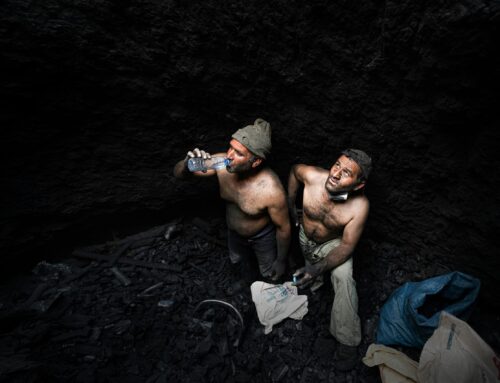Copper, a reddish-orange, malleable, and ductile metal, has been a cornerstone of human civilization for millennia. From ancient tools and ornaments to modern-day electronics and infrastructure, copper’s versatility and conductivity have made it an indispensable material. This blog post delves into the world of copper as a commodity, exploring its mining, processing, uses, economic significance, environmental impact, pricing dynamics, technological advancements, and geopolitical influences.
A Global Footprint: Where Copper Mines Exist
Copper is found in various locations across the globe, often concentrated in specific geological formations. Some of the major copper-producing regions include:
- South America: Chile is the world’s largest copper producer, with significant deposits in the Andes Mountains. Peru also boasts substantial copper reserves.
- North America: The United States, particularly Arizona and Montana, has a long history of copper mining. Canada also contributes to North American copper production.
- Africa: Zambia and the Democratic Republic of Congo (DRC) form the “Copperbelt,” a region known for its rich copper deposits.
- Asia: Indonesia, particularly the Grasberg mine, holds significant copper reserves. China is also a major copper producer, although it is also a significant importer.
- Australia: Australia is a major player in the global copper market, with significant mines in Western Australia and South Australia.
This global distribution of copper mines ensures a diverse supply chain for this vital metal.
The Copper Trade: Top Importers and Exporters
The global copper trade is a complex network of importing and exporting countries. Some of the top players include:
Top Importers:
- China: As the world’s largest consumer of copper, China is the top importer, driven by its massive manufacturing and infrastructure development.
- United States: The US relies on copper imports to supplement its domestic production and meet its industrial needs.
- Japan: Japan, a technologically advanced nation, imports significant amounts of copper for its electronics and automotive industries.
- Germany: Germany, a manufacturing powerhouse, imports copper for its industrial and automotive sectors.
- South Korea: South Korea’s robust electronics and shipbuilding industries drive its copper imports.
Top Exporters:
- Chile: As the world’s leading copper producer, Chile is the top exporter, supplying copper to countries worldwide.
- Peru: Peru, another major copper producer, plays a significant role in the global copper export market.
- Democratic Republic of Congo (DRC): The DRC, despite facing various challenges, is a major copper exporter due to its rich mineral resources.
- Zambia: Zambia, along with the DRC, contributes significantly to the African copper export market.
- Australia: Australia, with its abundant mineral resources, is a key player in the global copper export market.
These trade dynamics highlight the interconnectedness of the global copper market, with producing countries supplying copper to consuming nations.
From Ore to Metal: The Mining and Smelting Process
The journey of copper from ore to refined metal involves several key stages:
Mining:
- Exploration: Geologists identify potential copper deposits through various methods, including geological surveys, drilling, and geochemical analysis.
- Extraction: Once a viable deposit is found, mining begins. This can be done through open-pit mining for shallow deposits or underground mining for deeper deposits.
- Crushing and Grinding: The extracted ore is crushed and ground into finer particles to liberate the copper-bearing minerals.
- Flotation: The ground ore is mixed with water and chemicals, and air is blown through the mixture. The copper minerals attach to the air bubbles and float to the surface, where they are collected.
Smelting:
- Concentrate Roasting: The copper concentrate is roasted to remove sulfur and other impurities.
- Smelting: The roasted concentrate is smelted in a furnace at high temperatures to produce a molten copper matte.
- Converting: The copper matte is further processed in a converter to remove more impurities and produce blister copper.
- Refining: Blister copper is refined electrolytically to produce high-purity copper cathodes.
This complex process transforms raw ore into the refined copper that is used in various industries.
Copper’s Diverse Applications: Industries that Rely on Copper
Copper’s excellent electrical and thermal conductivity, along with its malleability and ductility, make it essential for a wide range of industries:
- Electrical and Electronics: Copper is the primary conductor of wires, cables, and electrical components. It is crucial for power generation, transmission, and distribution, as well as for electronics, telecommunications, and appliances.
- Construction: Copper is used in plumbing, roofing, and other building materials due to its corrosion resistance and durability.
- Transportation: Copper is essential for vehicles, including cars, trains, and aeroplanes, in electrical wiring, motors, and braking systems.
- Industrial Machinery: Copper is used in various industrial equipment, including heat exchangers, motors, and generators.
- Renewable Energy: Copper plays a crucial role in renewable energy technologies, such as solar panels and wind turbines, due to its high conductivity.
The diverse applications of copper across these industries underscore its importance for modern society.
Copper’s Economic Significance: A Catalyst for Development
Copper plays a vital role in economic development for several reasons:
- Infrastructure Development: Copper is essential for building and maintaining infrastructure, including power grids, transportation networks, and communication systems, which are crucial for economic growth.
- Industrial Growth: Copper is a key input for various industries, driving manufacturing activity and creating jobs.
- Export Earnings: For copper-producing countries, copper exports generate significant revenue, contributing to their economic growth.
- Investment: Copper mining and processing projects often attract significant investment, boosting economic activity and creating employment opportunities.
Copper’s importance for various sectors makes it a crucial driver of economic development.
Environmental Impacts: The Challenges of Copper Production
Copper mining and production can have significant environmental impacts:
- Habitat Destruction: Mining activities can lead to deforestation, soil erosion, and habitat loss.
- Water Pollution: Mining operations can contaminate water sources with heavy metals and other pollutants.
- Air Pollution: Smelting processes can release harmful gases and particulate matter into the atmosphere.
- Waste Generation: Mining and processing generate large amounts of waste rock and tailings, which can pose environmental risks.
Addressing these environmental challenges is crucial for sustainable copper production.
Copper Pricing Dynamics: Factors that Influence Fluctuations
Copper prices fluctuate in global markets due to a variety of factors:
- Supply and Demand: Changes in supply and demand for copper influence its price. Increased demand or decreased supply can lead to price increases, while the opposite can lead to price decreases.
- Economic Growth: Global economic growth, particularly in major consuming countries like China, affects copper demand and prices.
- Geopolitical Events: Political instability, trade disputes, and other geopolitical events can disrupt copper supply chains and impact prices.
- Currency Fluctuations: Changes in currency exchange rates can affect the price of copper in different countries.
- Speculation: Speculative trading in copper futures markets can also influence price movements.
Understanding these factors is crucial for analyzing copper price trends.
Technological Advancements: Innovations in Copper Extraction and Recycling
The copper industry is constantly evolving, with technological advancements aimed at improving efficiency, reducing environmental impact, and increasing copper recovery:
- Improved Mining Techniques: Advancements in mining technology, such as automation and remote sensing, are improving safety and efficiency.
- Enhanced Smelting Processes: New smelting technologies are being developed to reduce emissions and improve copper recovery.
- Hydrometallurgy: Hydrometallurgical processes, which involve leaching copper from ore using chemical solutions, are becoming increasingly important for treating low-grade ores and reducing environmental impact.
- Recycling Technologies: Advanced recycling technologies are being developed to recover copper from scrap materials and reduce the need for primary mining.
These technological advancements are crucial for ensuring a sustainable copper supply.
Geopolitical Influences: The Copper Trade and International Relations
Geopolitical factors play a significant role in the copper trade:
- Trade Agreements: Trade agreements between importing and exporting countries can influence copper trade flows and prices.
- Resource Nationalism: Some countries may impose restrictions on copper exports or nationalize copper mines, affecting global supply.
- Political Instability: Political instability in copper-producing countries can disrupt supply chains and impact prices.
- International Relations: Relations between copper-importing and exporting countries can influence trade dynamics and access to copper resources.
These geopolitical factors highlight the complex interplay between copper and international relations.
Conclusion: Copper’s Enduring Importance
Copper’s unique properties and diverse applications have made it an indispensable material for human civilization. From its role in electrical infrastructure to its use in renewable energy technologies, copper is crucial for economic development and modern society. Understanding the complex dynamics of copper mining, processing, trade, pricing, and environmental impact is essential for ensuring a sustainable supply of this vital metal. As technology continues to advance and global challenges evolve, copper will undoubtedly remain a cornerstone of our world.



